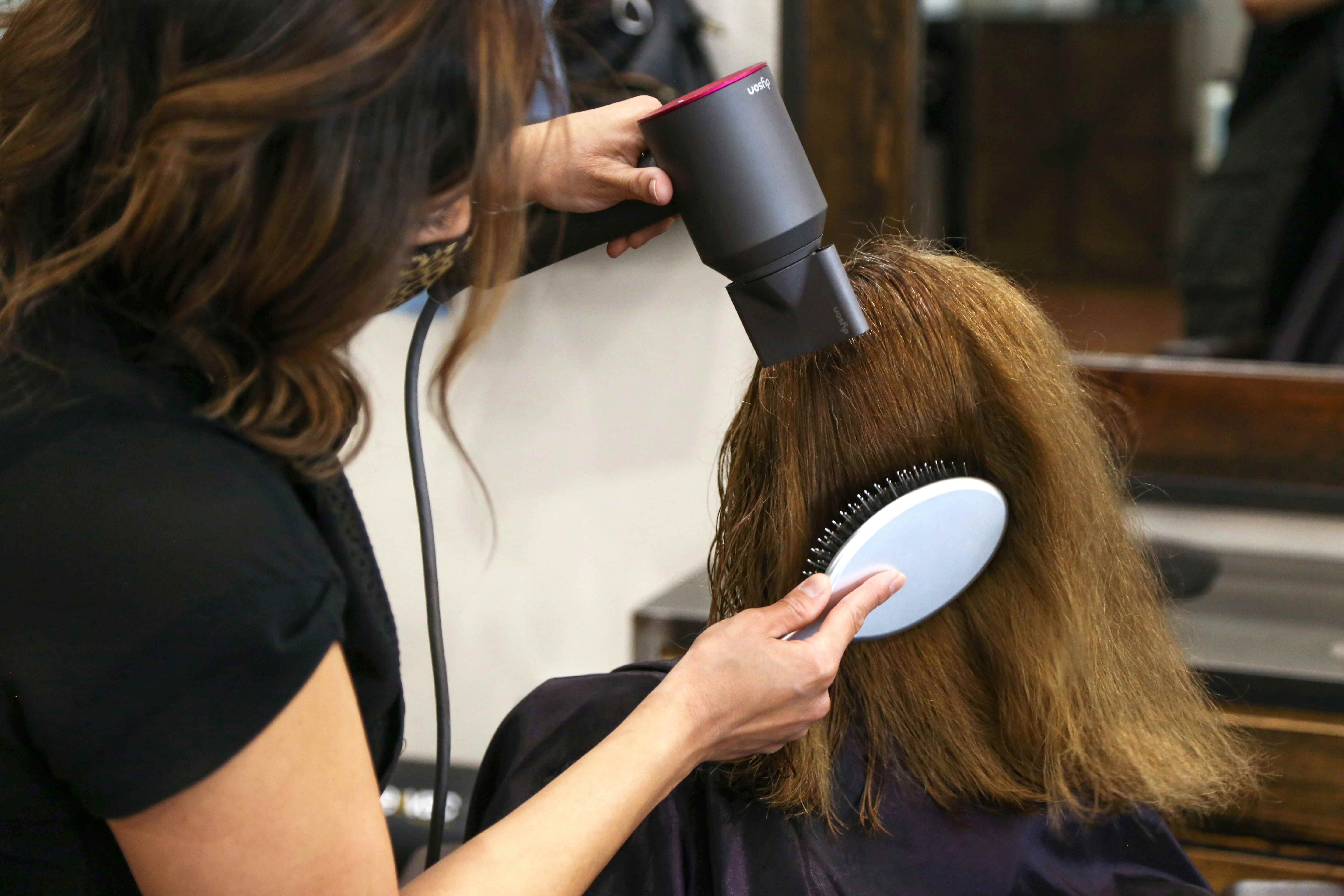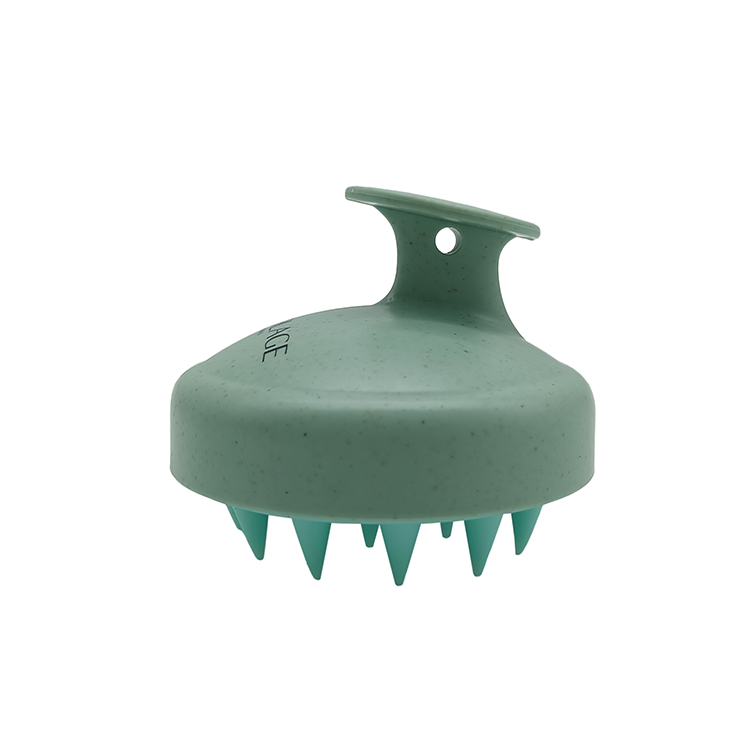 Scalp massage combs have gained popularity for their ability to boost circulation, promote hair growth, and improve overall scalp health. However, a common question among users is whether it’s better to use this comb on wet or dry hair. This article explores the pros and cons of each method to help you achieve the best results for your hair and scalp health.
Scalp massage combs have gained popularity for their ability to boost circulation, promote hair growth, and improve overall scalp health. However, a common question among users is whether it’s better to use this comb on wet or dry hair. This article explores the pros and cons of each method to help you achieve the best results for your hair and scalp health.
Benefits of Using a Scalp Massage Comb
Before deciding when to use a scalp massage comb, it's essential to understand its benefits. Scalp massage combs stimulate blood flow to the scalp, which encourages hair growth by bringing nutrients to hair follicles. This gentle massage can also help reduce stress, alleviate scalp tension, and distribute natural oils along the hair shaft, leaving hair looking shinier and healthier.
1. Using a Scalp Massage Comb on Wet Hair
Many people prefer using a scalp massage comb on wet hair, such as right after washing. Here are some benefits and considerations:
· Easier Detangling: When used on wet hair, a scalp massage comb can help detangle knots formed during washing, reducing breakage.
· Nourishing Product Distribution: After applying conditioner or scalp treatments, a scalp massage comb can help distribute these products evenly, allowing them to penetrate better into the scalp and hair strands.
·Risk of Hair Breakage: Wet hair is more elastic and prone to breakage. Using a gentle, wide-tooth scalp massage comb helps minimize this risk, but it's essential to use gentle strokes to avoid damaging the hair.
If you choose to use a scalp massage comb on wet hair, be sure to start at the ends and work your way up to the roots. This method reduces pulling and helps protect against unnecessary breakage.
2. Using a Scalp Massage Comb on Dry Hair
Using a scalp massage comb on dry hair is another popular option, and it comes with its own advantages:
· Better Oil Distribution: Dry hair allows the scalp massage comb to distribute natural oils along the hair strands effectively, enhancing shine and helping to keep hair moisturized.
· Increased Circulation: Dry brushing stimulates the scalp and increases blood flow without the added weight and stretch of wet hair. This can encourage healthy hair growth and provide a refreshing sensation.
· Less Breakage Risk: Since dry hair is less elastic, it’s less prone to breakage than wet hair. However, if you have brittle hair, be cautious to avoid pulling or tugging.
For best results, use the scalp massage comb on dry hair before washing, which can help loosen impurities and dead skin cells, making the cleansing process more effective.

3. What Type of Hair Benefits Most from Each Method?
· Thick or Curly Hair: Those with thick or curly hair might find using a scalp massage comb on wet hair easier, as wet hair tends to be more manageable for detangling. However, using it on dry hair can also help distribute oils and keep curls looking shiny and defined.
· Fine or Straight Hair: Fine or straight hair often tangles more easily when wet, so using a scalp massage comb on dry hair is usually gentler and less likely to cause breakage. Dry combing allows for effective distribution of natural oils, giving fine hair added volume and shine.
4. Choosing the Right Scalp Massage Comb for Wet or Dry Use
The material and design of the scalp massage comb play a significant role in how it performs on wet or dry hair. Some features to consider include:
· Wide-Tooth Comb Design: A wide-tooth comb is ideal for wet hair as it reduces pulling and minimizes breakage. This design works well for thick and curly hair.
· Soft Bristles or Flexible Teeth: For dry hair, a scalp massage comb with soft, flexible teeth provides a gentle massage without damaging the scalp or hair strands. This type is suitable for all hair types and helps increase circulation during dry brushing.
· Ergonomic Grip: An ergonomic handle ensures comfort and control, making it easier to massage the scalp without applying excessive pressure.
 5. Tips for Using a Scalp Massage Comb
5. Tips for Using a Scalp Massage Comb
Regardless of hair type or preference for wet or dry combing, here are some tips to make the most out of your scalp massage comb:
· Be Gentle: Use gentle strokes and avoid excessive pressure to prevent scalp irritation or hair breakage.
· Use a Serum or Oil: If combing on dry hair, applying a few drops of hair oil or serum before brushing can enhance the shine and nourishment provided by the scalp massage comb.
· Clean the Comb Regularly: To maintain hygiene, regularly wash your scalp massage comb to remove any product build-up or debris.
Conclusion: Finding What Works Best for You
So, is it better to use a scalp massage comb on wet or dry hair? Ultimately, it depends on your hair type and personal preference. For those with thick or curly hair, wet combing may be more practical, while dry hair combing is often safer for fine or straight hair. The scalp massage comb is a versatile tool that, when used correctly, can enhance hair and scalp health, whether used on wet or dry hair.
With the right techniques and a quality scalp massage comb, you can enjoy healthier hair, improved circulation, and a relaxed, refreshed scalp. Choose the method that works best for your routine and hair needs to get the full benefits of this helpful hair care tool.
Tags:
 LEES PROMOTION
LEES PROMOTION
